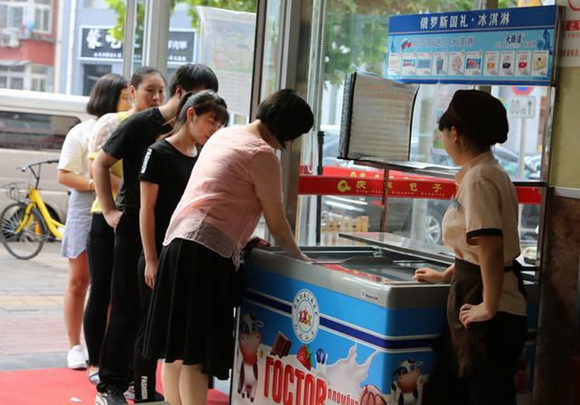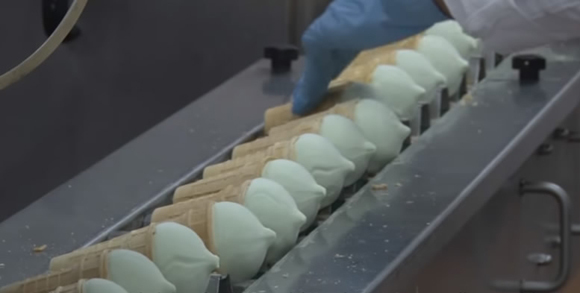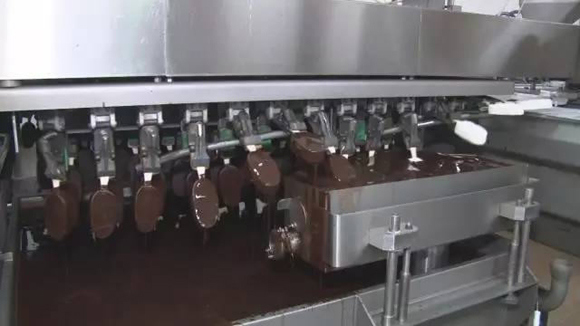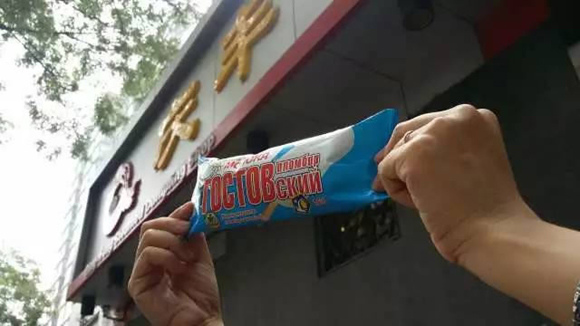The ice cream is priced between 6 to 30 yuan (80 cents to 4.5 US dollars), and each store sells an average of 300 ice creams a day, according to Beijing Daily.

Customers line up to buy Russian ice cream in Beijing. (Photo via Beijing Daily)
Roman Lola, the CEO of IceBerry, told Xinhua News Agency that they plan to export 500 tons of ice cream to China in 2017.
It will not be an easy trip for the ice cream to travel from Russia to China, as the chilly dessert needs to be moved within a temperature-controlled supply chain.

Russian ice cream. (Photo via Xinhua)
"Compared to high-end ice cream brands in Europe and the US, the Russian ice cream has an obviously benefit on price," said Wang Xianzhe, a company manager focusing on Russian food imports in China. "The good quality and affordable price, let alone President Putin's advertising effect, all support the Russian ice cream catching on in China."

Russian ice cream. (Photo via Xinhua)
Some 209 tons of ice cream, worth 775,000 U.S. dollars, were imported from Russia to China during the first half of 2017, a record high at the port, according to statistics from Manzhouli Entry-Exit Inspection and Quarantine Bureau.
In addition to ice cream, other Russian-made products are also popular in China, including Russian candy and chocolate.
More than 30 types of Russian goods were presented at the International Exhibition of Food and Beverage in Shanghai earlier this May, as it waited for the Chinese market to open the door.

Try one? (Photo via Xinhua)
China became a major consumer of Russian food in 2016, according to the Russian Export Center, as it bought some 1.55 billion dollars worth of Russian goods, a 20-percent growth from 2015.


















































